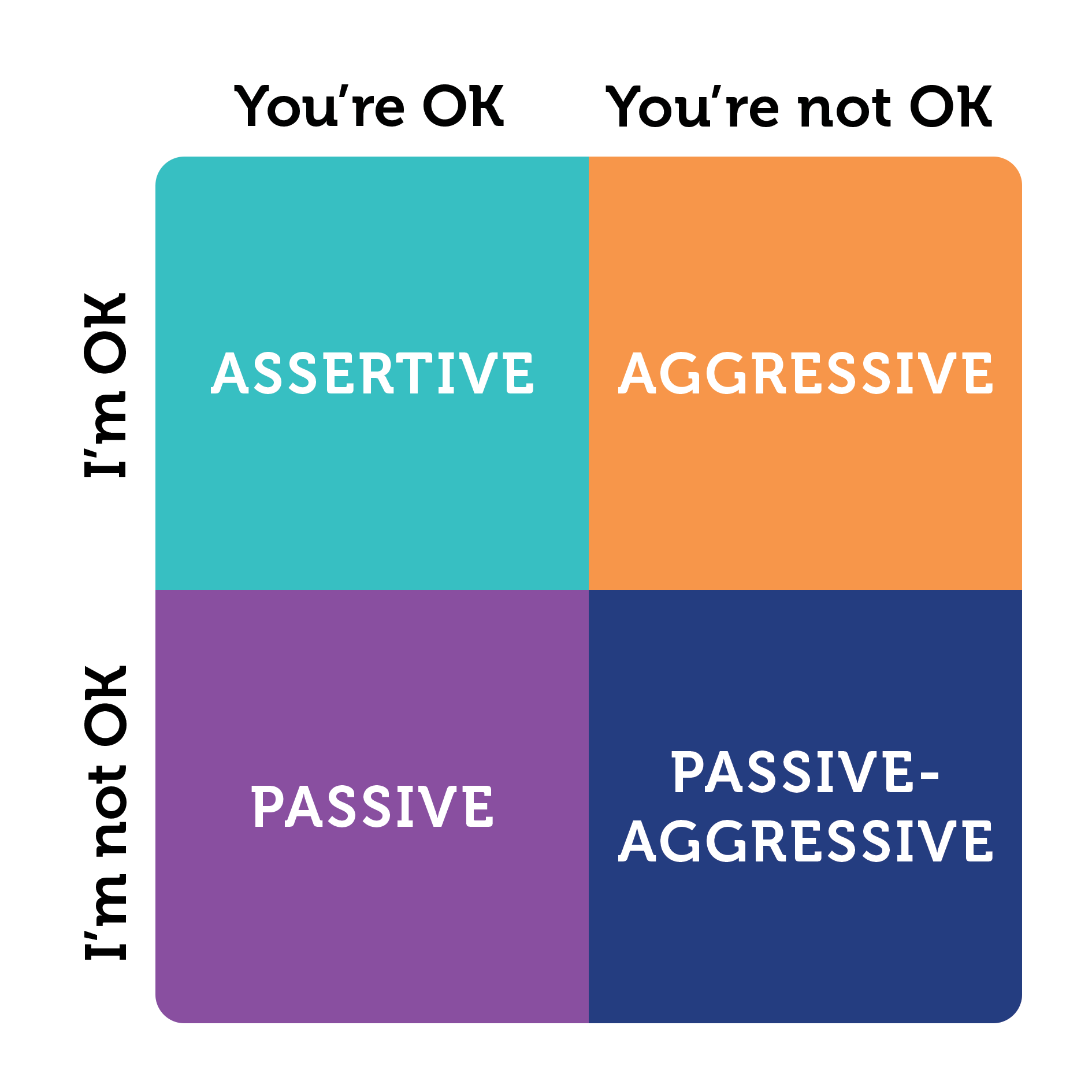yvette@managementcentre.co.uk
Being assertive at work can be really hard, and this is something many people struggle with. Our insecurities, perceived weaknesses, motivations and goals can all stop us from being assertive when we need to be. In this article, Charlotte Scott explains why we need assertiveness, what it actually is, and how to be assertive.
Assertiveness is a communication skill, and displaying assertiveness is essential to working with others. Being assertive enables you to put forward your ideas, thoughts and opinions by expressing yourself effectively. It also helps to earn others’ respect and boost your self-esteem.
You have probably encountered assertive people who are able to navigate difficult situations calmly and professionally, deflecting others anger and frustration with diplomacy and confidence. This level of assertiveness helps to achieve results, solve problems and build good relationships with others. It’s a useful skill we should all aim to develop.
Many people don’t understand what assertiveness truly is. They think it is only about putting their opinions forward and speaking up.
Assertiveness is actually an interplay between how we communicate and how we treat the other person in the conversation.
The I’m Ok, You’re Ok model created by Thomas Anthony Harris, brings this balance to life:

I’m ok means I respect myself and feel confident to put forward my thoughts and opinions.
I’m not ok means I don’t feel able to express myself or my ideas.
You’re ok means I respect you, I am interested in your perspective and want to hear it.
You’re not ok means I’m not respecting you, and don’t value your ideas.
The results of this balancing act are:
People sometimes believe that speaking up is the same as being bossy, pushy, or disrespectful of other people. When we take this aggressive approach, we’re enabling our voice to be heard, but we’re not respecting or listening to the other person.
We can display aggression by talking over people, exaggerating and overstating our point, or using words to belittle the other person or their idea in a way that can be easily dismissed.

Aggressive behaviour is selfish, rude and controlling, it shuts down the conversation. Whilst you might win the conversation you have not actually won-over the other person and will have damaged the relationship.
Result: winning the conversation, losing the relationship
Being passive means that you’re not respecting yourself and so are not willing to put forward your ideas and thoughts. While at the same time you’re allowing the other person to express themselves.
Sometimes we become passive because we don’t want to be seen as pushy, or because we don’t believe our voice is valued, for example when speaking with a more senior person. When we act passively, we might understate how we’re feeling, use humour to deflect the situation, or steer the conversation to something safer.
By taking this approach true dialogue doesn’t happen so your vital perspective is lost. Being unable to share your opinion can also lead to stress, frustration or at worst burnout.
Result: losing yourself, allowing others to win
People often think they are being passive, when actually they are being passive-aggressive. Being passive-aggressive means that you are not respecting yourself by being honest about your point of view, but you are also showing subtly that the other person is in the wrong. Passive-aggressive behaviour makes both you and the other person feel bad.
We can display this when we feel wronged, but not able to solve the situation. When we act passive-aggressively we might use words to agree with the other person, but show our unhappiness through our tone of voice, facial expression or negative body language. We might display grumpy, sulky or moody behaviour. We might ignore others’ comments or not follow-through on agreed tasks.

These indirect expressions of hostility make those around us feel very uncomfortable. Over time we will be seen as unreasonable and unprofessional. As problems and issues aren’t solved, our resentment and feelings of powerlessness can grow.
Result: everybody loses
Being assertive means that you respect yourself enough to put forward your thoughts and suggestions, whilst also respecting the other person and their point of view. You are communicating directly and honestly as well as being kind and likeable.
When you’re assertive, you talk openly about what you need. You might not always get what you want, but by listening to others and by having the courage to speak candidly and respectfully, your calm and agreeable style will earn others’ respect.
Because assertiveness is based on mutual respect, it’s an effective and diplomatic approach. It allows us to cooperate, to understand both points of view and ideally to resolve conflict by finding an outcome that suits us both.
Result: it’s not about winning, its about outcomes for everyone

Learning to be assertive takes time, self-control and confidence. Follow these five steps to develop your assertiveness skills:
Thinking I’m Ok, You’re Ok will keep you assertive no matter how difficult the conversation. You might not always get exactly what you want, but your pride and self-respect won’t be damaged. And you will build a reputation for being confident, professional and great to work with.
To find out more about the I’m Ok, You’re Ok model and other ways we can help you improve assertiveness at work contact us online or call 074 3690 3103.
We also explore issues around self-confidence and assertiveness on the half-day Assertive Conversations training programme.